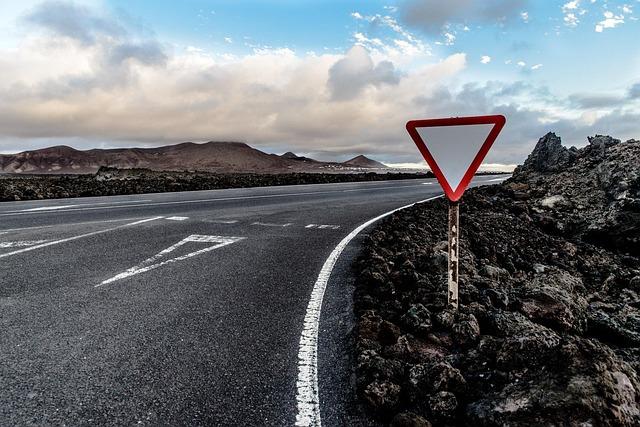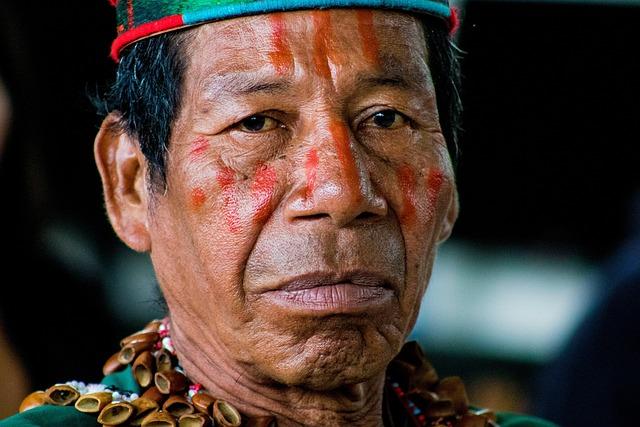Significance of the Landmark Ruling for the Sámi Folks in Finland
The current ruling regarding the Sámi individuals’s rights in Finland marks a essential step ahead not just for the Indigenous group itself but in addition for the broader international motion advocating for indigenous rights. By recognizing the Sámi’s declare to conventional lands, the court docket has affirmed their cultural and financial practices, that are deeply intertwined with these territories. This determination underscores the significance of Indigenous governance and self-determination within the face of environmental and industrial pressures. it serves as a strong instance of how authorized programs can assist cultural heritage and sustainability after they align with the values of Indigenous peoples.
This landmark ruling resonates far past Finnish borders,inspiring Indigenous teams worldwide to claim their rights and search justice. As nations grapple with the implications of local weather change and useful resource exploitation, the Sámi case highlights the effectiveness of authorized frameworks in defending Indigenous rights. The ruling additionally acts as a reminder of the necessity for worldwide cooperation in respecting, selling, and defending Indigenous cultures. Key factors to contemplate embrace:
Cultural reaffirmation: strengthening Sámi identification and its connection to the land.Authorized precedent: Setting a benchmark for future Indigenous rights instances globally.Environmental stewardship: recognizing the Sámi’s function in sustainable land administration.International consciousness: Elevating the talk on Indigenous rights inside worldwide boards.
Implications for Indigenous Rights in Worldwide Legislation

The current ruling in favor of the Sámi individuals units a big precedent within the realm of Indigenous rights inside worldwide regulation.This landmark determination not solely acknowledges the Sámi’s historic connection to their lands but in addition reinforces their proper to take part in selections affecting their habitat and cultural practices. By recognizing their conventional reindeer herding practices as important to their identification and livelihood, the ruling emphasizes the significance of sustaining Indigenous cultures in a quickly altering world. Such authorized recognition has the potential to affect international requirements relating to Indigenous rights, compelling different nations to re-evaluate their frameworks for safeguarding marginalized communities.
Moreover,this ruling could catalyze a shift in direction of better accountability in worldwide authorized buildings,encouraging Indigenous teams worldwide to claim their rights extra vigorously. Key implications of the ruling embrace:
Strengthening the function of worldwide our bodies in defending Indigenous rights.Encouraging harmonization of home legal guidelines with worldwide treaties just like the UN Declaration on the Rights of Indigenous Peoples.Selling the institution of inclusive insurance policies that respect indigenous sovereignty and land rights.Fostering better consciousness of indigenous points amongst policymakers and the general public.aspectImpactLegal ProtectionIncreased recognition of Indigenous land rights.International PrecedentInfluences different nations’ insurance policies.Group EmpowermentStrengthened advocacy for self-determination.Cultural PreservationSupports the continuation of Indigenous traditions.
Assessing the Response from Authorities and Indigenous Organizations

The landmark ruling in favor of the Sámi individuals represents a big turning level within the dialog between governments and Indigenous organizations. Many are watching carefully as this determination might compel state authorities to reevaluate their relationships with indigenous communities,significantly within the realm of land rights and pure useful resource administration. Governments are actually challenged to make sure that their insurance policies mirror the wants and rights of Indigenous peoples, recognizing their historic connections to the land and tradition. Some key responses embrace:
Elevated collaboration: Participating in additional significant consultations with Indigenous teams.Coverage reforms: Reevaluating present legal guidelines to align them with the rights acknowledged by worldwide frameworks.Dedication to schooling: Selling consciousness of Indigenous rights and histories amongst bureaucrats and the general public.
Indigenous organizations, for his or her half, categorical cautious optimism relating to the ruling’s implications however stay vigilant concerning the follow-through from each governments and personal sector actors. They stress the significance of making certain that this final result results in tangible adjustments somewhat than simply symbolic gestures. To trace progress, numerous Indigenous teams are getting ready to implement monitoring frameworks to evaluate commitments made by governments and companies after the ruling. Key areas for these assessments embrace:
Space of AssessmentImpact MeasurementLand AccessAccomplished restitution of conventional landsresource ManagementJoint administration agreementsCommunity EngagementInvolvement of Indigenous voices in decision-making
classes Realized from the Sámi Case for international Indigenous Actions

The current landmark ruling for the Sámi individuals in Finland serves as a pivotal second for Indigenous rights worldwide, highlighting a number of essential classes for international Indigenous actions. Firstly, the popularity of Sámi land rights underscores the significance of authorized frameworks that shield Indigenous identities and territorial claims. The Sámi case illustrates that efficient advocacy and authorized motion can result in vital outcomes. Furthermore, it emphasizes the necessity for cross-border collaboration amongst Indigenous teams, permitting for shared methods that bolster their collective voice in opposition to oppressive insurance policies. By standing in solidarity, Indigenous communities can amplify their calls for for sovereignty and heritage safety on the worldwide stage.
Moreover, the Sámi expertise sheds gentle on the importance of incorporating cultural practices and data programs into authorized arguments. The ruling displays a rising acknowledgment that Indigenous methods of life are intrinsically linked to land administration and environmental stewardship. As such, international Indigenous actions can leverage this understanding by prioritizing cultural narratives of their campaigns. Moreover, it requires a reassessment of governmental buildings to make sure that Indigenous voices aren’t solely heard but in addition considerably affect policy-making. Sharing greatest practices and successes from the Sámi case might encourage different Indigenous populations to pursue their rights and reclamation efforts with renewed vigor.
Future Challenges for Sámi Rights and Environmental protections

The momentous ruling for the Sámi individuals in Finland marks a essential juncture, signaling each progress and rising challenges within the quest for Indigenous rights and environmental protections globally. This authorized victory doesn’t merely mirror a localized triumph; it serves as a beacon for different Indigenous communities worldwide who proceed to grapple with problems with land rights, cultural preservation, and ecological stewardship.International locations should acknowledge that the sovereignty of Indigenous peoples is intrinsically linked to environmental well being, making the safety of those rights an pressing international concern.
Nonetheless, the street forward is fraught with complexities.Ongoing threats reminiscent of local weather change, industrial growth, and useful resource extraction can jeopardize the fragile stability that Indigenous cultures preserve with their environments. Key challenges embrace:
Local weather Change: Altered climate patterns disproportionately have an effect on conventional livelihoods.Useful resource Extraction: Mining, logging, and fishing infringements threaten each tradition and ecology.Authorized Ambiguities: The necessity for clear legal guidelines safeguarding Indigenous rights is extra urgent than ever.International Consciousness: The battle for Indigenous rights should transcend borders to garner worldwide solidarity.
Moreover,addressing these points necessitates a collaborative method incorporating authorized frameworks and grassroots activism. For instance,establishing a in depth mannequin the place Indigenous rights are acknowledged in nationwide insurance policies might promote higher environmental stewardship whereas making certain that Indigenous voices are heard in decision-making processes. The desk under illustrates potential pathways to bolster Sámi rights in relation to environmental safety:
PathwayDescriptionPolicy AdvocacyLobbying for inclusion of Indigenous rights in environmental laws.Group EngagementBuilding alliances between indigenous teams and environmental organizations.Analysis CollaborationPartnering with tutorial establishments for research on Indigenous practices and sustainability.Worldwide MobilizationUtilizing worldwide platforms to shine a lightweight on Sámi points and rights.
Suggestions for Enhancing indigenous Rights Frameworks Worldwide

the current ruling in favor of the Sámi individuals in Finland underscores the pressing want for complete reforms within the mechanisms safeguarding Indigenous rights worldwide. To successfully improve Indigenous rights frameworks, stakeholders should prioritize the next actions:
Authorized Recognition: Set up clear authorized definitions defending the rights of Indigenous peoples, making certain their voices are thought-about in legislative processes.Land Rights Restoration: Implement complete land restitution insurance policies that acknowledge and restore ancestral lands to Indigenous communities.Participatory Governance: Create platforms for significant participation of Indigenous peoples in decision-making processes about their lands, cultures, and sources.Preservation of Languages and Cultures: Generate insurance policies directed at safeguarding Indigenous languages and cultural practices, making certain they continue to be vibrant and viable.
Furthermore, worldwide collaboration and solidarity throughout nations can considerably bolster these frameworks. By sharing greatest practices and fostering dialogue, nations can study from profitable Indigenous rights implementations and mitigate widespread challenges.Key areas for collaboration embrace:
Space of CollaborationPotential ImpactPolicy DevelopmentStrengthens authorized protections and rights recognition.Analysis and Knowledge SharingInforms efficient insurance policies primarily based on empirical proof.Group Empowerment ProgramsEnhances self-determination and useful resource administration.
The Approach Ahead
the landmark ruling in Finland regarding the Sámi individuals represents a big victory not just for Indigenous rights inside the nation but in addition units a vital precedent on the worldwide stage.As nations grapple with the complexities of respecting Indigenous sovereignty and heritage,this ruling underscores the significance of authorized frameworks that prioritize the voices and rights of Indigenous communities. It highlights a rising recognition of the necessity for extra sturdy protections in opposition to exploitation and environmental degradation, which disproportionately have an effect on Indigenous lands and cultures. Because the world more and more turns its consideration to problems with social justice and sustainable improvement, the Sámi case might function a pivotal reference level for comparable struggles worldwide, inspiring new dialogues and initiatives geared toward safeguarding Indigenous rights. The implications of this ruling lengthen far past Finland’s borders, providing hope and steering to Indigenous populations all over the place of their quest for justice and recognition.
Source link : https://europ.info/2025/03/12/finland-2/what-a-landmark-ruling-for-the-sami-people-in-finland-means-for-the-protection-of-indigenous-rights-globally-phys-org/
Writer : Samuel Brown
Publish date : 2025-03-12 21:52:00
Copyright for syndicated content material belongs to the linked Source.




